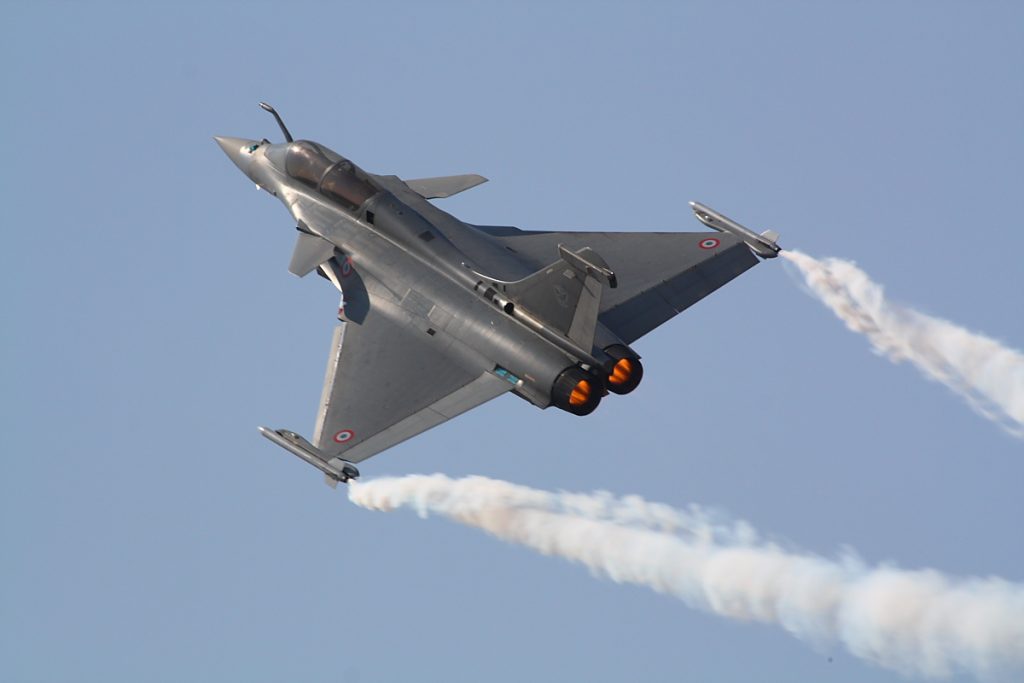
French President Emmanuel Macron has intensified calls for Europe to reassess its military procurement strategies, urging EU nations to pivot away from American-made defense systems. In an interview published on March 14, 2025, by Le Parisien and Nice-Matin, Macron advocated replacing Lockheed Martin’s F-35 fighter jets with France’s Rafale, and substituting the U.S.-built Patriot missile defense system with the Franco-Italian SAMP/T platform. His appeal comes amid a period of heightened geopolitical uncertainty and evolving transatlantic relations.
Transatlantic Shifts: The Trump Factor and NATO’s Future
Macron’s remarks arrive against the backdrop of U.S. political volatility, particularly following the re-election of Donald Trump in January 2025. Concerns over Washington’s commitment to NATO have resurfaced, reminiscent of the former president’s earlier skepticism toward the alliance. European leaders, therefore, are increasingly focused on consolidating defense independence and shielding their capabilities from the unpredictability of U.S. foreign policy shifts.
Positioning himself once again as a leading voice for European strategic sovereignty, Macron emphasized the need to bolster continental defense industries. He argued that reducing reliance on U.S. defense technology is not merely an economic decision—it’s a geopolitical necessity. “We must offer European alternatives to nations accustomed to American equipment,” he stated, highlighting the Rafale fighter jet by Dassault Aviation and the SAMP/T system developed by Eurosam, a joint venture between France’s Thales and Italy’s MBDA.
Macron presented a dual case: enhancing European autonomy while stimulating economic growth through domestic defense production. By scaling up manufacturing of Rafale and SAMP/T, he contends, Europe could lower unit costs and cultivate a self-sustaining defense ecosystem less beholden to Washington’s strategic interests.
The Rafale, operational since 2001, is a multirole, twin-engine fighter known for its versatility in aerial combat, ground attack, and reconnaissance. In contrast, the U.S. F-35 boasts cutting-edge stealth and sensor integration, offering seamless NATO interoperability. Despite this, Macron maintains that Rafale’s adaptable performance profile and lower operating costs provide a compelling alternative.
European Procurement Patterns and Diverging Paths
Macron’s appeal comes at a time when multiple European states—including Poland and Finland—have already committed to the F-35. Poland’s $4.6 billion deal in 2020 for 32 jets and Finland’s subsequent order of 64 aircraft underscore the appeal of U.S. technology, particularly among Eastern European states wary of Russian aggression and reliant on American security guarantees.
Macron’s proposal also extends to ground-based missile defense. The SAMP/T system, equipped with Aster 30 missiles, offers solid medium-range protection—up to 75 miles—against aircraft and missiles. Though it falls short of the Patriot’s 100-mile range, its lower cost and streamlined maintenance make it an attractive option. France and Italy already supplied a SAMP/T system to Ukraine in 2023, with a second system in development, demonstrating the platform’s operational relevance.
French Defense Minister Sébastien Lecornu reinforced Macron’s stance, stressing that European defense spending should circulate within Europe rather than enrich U.S. contractors. France’s 2025 defense budget includes plans to purchase 42 additional Rafales, and Lecornu confirmed efforts to ramp up SAMP/T production capacity.
Diverging Views Among European Allies
However, Macron’s push has met resistance. Polish officials, speaking to Politico, reaffirmed their commitment to the F-35, citing NATO integration as non-negotiable. Similarly, Germany’s investment in Patriot systems complicates any shift, despite Chancellor Olaf Scholz acknowledging the need for expanded European defense manufacturing during a recent security summit in Munich.
The financial metrics further illustrate the debate. While the F-35 commands a price tag of approximately $80 million per unit—excluding extensive lifetime costs estimated at $1.7 trillion for the U.S. fleet—the Rafale is priced slightly lower at $70 million with reportedly reduced upkeep. Air defense costs present a starker contrast: a Patriot battery can cost up to $1 billion, while a SAMP/T system is typically around $600 million.
France’s resistance to U.S. dominance in defense procurement is not new. By rejecting the F-35 program in the early 2000s, Paris aimed to shield its aerospace industry from American encroachment. Although the Rafale faced initial export challenges, recent contracts—such as Greece’s 24-jet order in 2021—have revitalized its export momentum. Likewise, Ukraine’s positive field reports on SAMP/T performance have bolstered its credibility in operational scenarios.
Muted U.S. Response and Industry Counterpressure
Washington’s official response has been measured. A U.S. State Department spokesperson noted that while European investment is welcome, NATO interoperability remains paramount. Defense giants Lockheed Martin and Raytheon have refrained from direct comment but continue lobbying European governments to maintain current procurement trajectories. Raytheon has specifically highlighted the global performance record of the Patriot system.
European reactions remain mixed. Italy, as a co-developer of SAMP/T, has expressed cautious support, with Prime Minister Giorgia Meloni highlighting the economic benefits of localized production. Smaller EU states such as Portugal, currently undecided on their next-generation aircraft, may offer the best opportunity for Macron’s proposal to gain traction.
Sovereignty vs. Capability
Defense analysts present a nuanced view. Carnegie Endowment’s Sophia Besch recognizes Macron’s sovereignty argument but acknowledges the F-35’s technological superiority and entrenched NATO compatibility. On missile defense, RUSI’s Justin Bronk cautions that SAMP/T’s shorter range could limit its appeal against threats like Russian hypersonic weapons, though upcoming variants may close that gap.
Macron has already acted to push his agenda forward, urging Thales and Dassault to reduce pricing barriers. Lecornu stated that increased orders could drive Rafale costs down by 10%. Meanwhile, industry chatter points to a next-generation SAMP/T variant with extended range capabilities.
Conclusion: A Strategic Crossroads for European Defense
Macron’s call to arms is as much about political identity as military capability. With Europe having spent over $100 billion on U.S. arms since 2014, his ambition is to recalibrate that trajectory. The real question is whether European nations are willing to trade long-standing U.S. security assurances for industrial self-reliance and regional autonomy—a decision that will shape the continent’s strategic landscape for decades to come.





